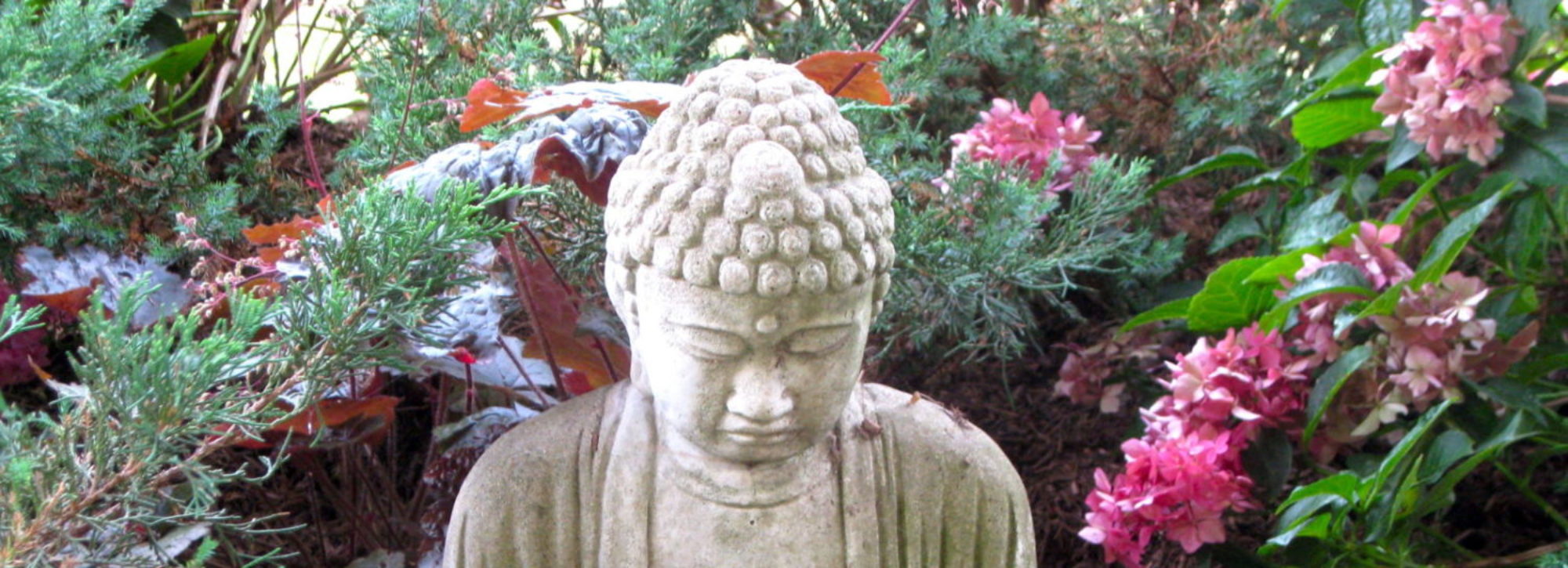”Enlightenment is intimacy with all things.” —Dogen Zenji
There are two types of attention.
One is a kind of critical scrutiny. It’s the kind of attention in which we set ourselves up to be judges rating and evaluating some aspect of our behaving, thinking, or experiencing. We watch ourselves in a distant and detached way like scientists observing a specimen under the microscope. We make our behavior the focus of a series of inquiries: ”Why did I do that?” ”What happened in my past that caused me to establish such-and-such a pattern?” None of this really helps us much: it distances us from life rather than joining us to it. It leads to a proliferation of thinking rather than dropping us into a deeper space of awareness.
The other kind of attention involves genuine contact with what is being attended to. It’s an empathic attunement to our own experiencing; an open listening without judgment; an intimacy with our own stream of consciousness. Meditation brings this open, noncritical, intimate listening, seeing, and feeling back to our life again and again.
The Pali word for this kind of attention is sati (mindfulness). Mindfulness is a bare-bones attention that lightly touches its object in an intimate way. It is free from judging, comparing, and thinking. It notices both sensations and the mind’s emotional, cognitive, and somatic reactions to them. It is for and against nothing. It doesn’t take sides or wish for things to be different from the way they are.
Mindfulness involves adopting an intentional stance vis-Á -vis one’s own experiencing. That stance can best be described as both a ”letting go” and a ”letting be.” When we are mindful we let go of aspirations to achieve any particular outcome. We temporarily suspend acting on our desires to prolong or avoid experiences and our tendency to label experiences as either ”good” or ”bad.” We let experiences be. We give them space and let them breathe. We let them speak for themselves. Experiences manifest without effort on our part, and subside without effort on our part.
When we are mindful we don’t allow experiences to take us for a ride, however. We sit like a mountain, intimately experiencing phenomena blossom, persist, and fade.
When we are mindful, we are not observing the world. The world is manifesting through us.
A bird is singing in a tree. Where is the birdsong? In the tree? In the vibrating air molecules? In our ears? In our auditory cortex? In our minds? In the bird’s mind?
When we are mindful we co-participate with all things as they co-arise in the world/mind. We are an integral part of the seamless web of being. How could it be otherwise?
”Conveying oneself towards all things to carry out practice-enlightenment is delusion. All things coming and carrying out practice-enlightenment through the self is realization.” – Dogen Zenji


Spoken like a master.
“When we are mindful, we are not observing the world. The world is manifesting through us.” – he doesn’t sound like the amateur he just claimed to be. 🙂
I second that, and really you say this stuff much better than I ever could. I am reading you too, by the way. I don’t subscribe to any blogs except my own and that’s just to make sure everything is working properly. But I know where all the places I like to go are and this is one of them.
I don’t know if the “seamless web of being” means the same thing to you as it does to me, but reading it here made me feel that it is really wonderful to have this kind of understanding. That thinking can be kind of dangerous if you dwell in it for too long. At the same time I think it should be okay to feel good about being a Buddhist every once in a while.
Hi Seth,
I admit I am a little confused about mindfulness. If I am correct traditional Buddhism teaches us to be always aware of ourselves (what we are doing and thinking) AND at the same time of our surroundings. But zen teaches us that if we are doing something that we have to do it well, to identify completely with what we are doing in this very moment, to “become action” (for example when we play an instrument the best thing for a good execution is not to think about how we sit and what we think but to concentrate on music solely and “forget” ourselves). Is this a contraddiction or simply my understanding is wrong?
The mistake here is to see mindfulness of internal processes and mindfulness of the environment as a duality. When we are mindful of chopping carrots, we’re as mindful of the carrots themselves as we are of the proprioceptive feedback from our muscles. Otherwise, our knife might miss the carrots and we might end up chopping off a finger instead! In Zen, we meditate with eyes open precisely so that we don’t make a duality of inside and outside. Meditation isn’t “going inside oneself,” but an opening up to the whole self/environment field. Does this help?
It surely does, thank you so much 🙂